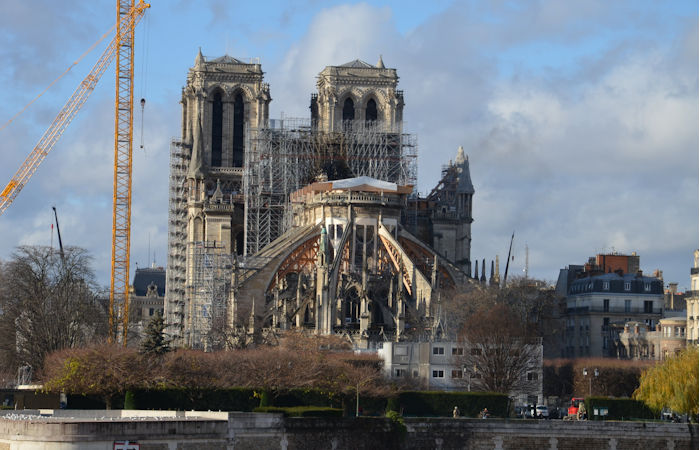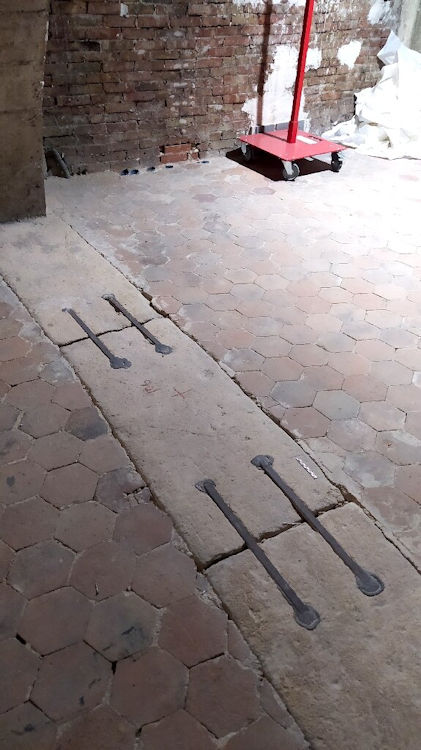Conny Waters – AncientPages.com – The Notre-Dame de Paris is the first known cathedral of Gothic-style architecture to be initially constructed with extensive use of iron to bind stones together. The 2019 fire that significantly damaged the cathedral enabled analyses leading to this discovery, by Maxime L’Héritier of Université Paris 8, France and colleagues, who present these findings in PLOS ONE on March 15, 2023.

View of the chevet of Notre-Dame de Paris under restoration. Credit: Maxime L’Héritier, CC-BY 4.0
At the time of its construction in the mid-12th century, Notre-Dame was the tallest building ever erected, reaching a height of 32 meters. Previous research suggests that this record was made possible by combining a number of architectural innovations. However, despite extensive use of iron reinforcements in more recent cathedrals and in efforts to restore old buildings, it has been unclear what role iron might have played in Notre-Dame’s initial construction.
Now, the 2019 fire and subsequent restoration have allowed L’Héritier and colleagues to access previously concealed parts of Notre-Dame that hold clues to the possible use of iron in its construction. The researchers obtained samples of material from 12 iron staples used to bind stones together in different parts of the building, including the tribunes, nave aisles, and upper walls. They applied radiocarbon dating as well as microscopic, chemical, and architectural analyses to better understand the staples.

The large iron staples that were revealed by the 2019 fire that tore through the Notre-Dame cathedral in Paris. Credit: Public Library of Science
These analyses suggest that iron staples were indeed used in the earliest phases of construction of Notre-Dame in the 1160s, making it the first building of its type to have relied on iron staples throughout its structure.
In combination with other archaeological and historical knowledge for that time period, the analyses also provide information that could help deepen understanding of the iron trade, circulation, and forging in 12th and 13th century Paris. For instance, many of the staples appear to have been forged by welding together pieces of iron obtained from a number of different supply sources.
The researchers note that further analyses of Notre-Dame samples and a comprehensive database of historical iron producers in the region are needed to confirm and expand on their novel findings regarding the medieval Parisian iron market.
The authors add, “Radiocarbon dating reveals that Notre-Dame de Paris is indisputably the first Gothic cathedral where iron was thought of as a real building material to create a new form of architecture. The medieval builders used several thousand of iron staples throughout its construction.”
The study was published in the journal PLoS ONE
Written by Conny Waters – AncientPages.com Staff Writer





